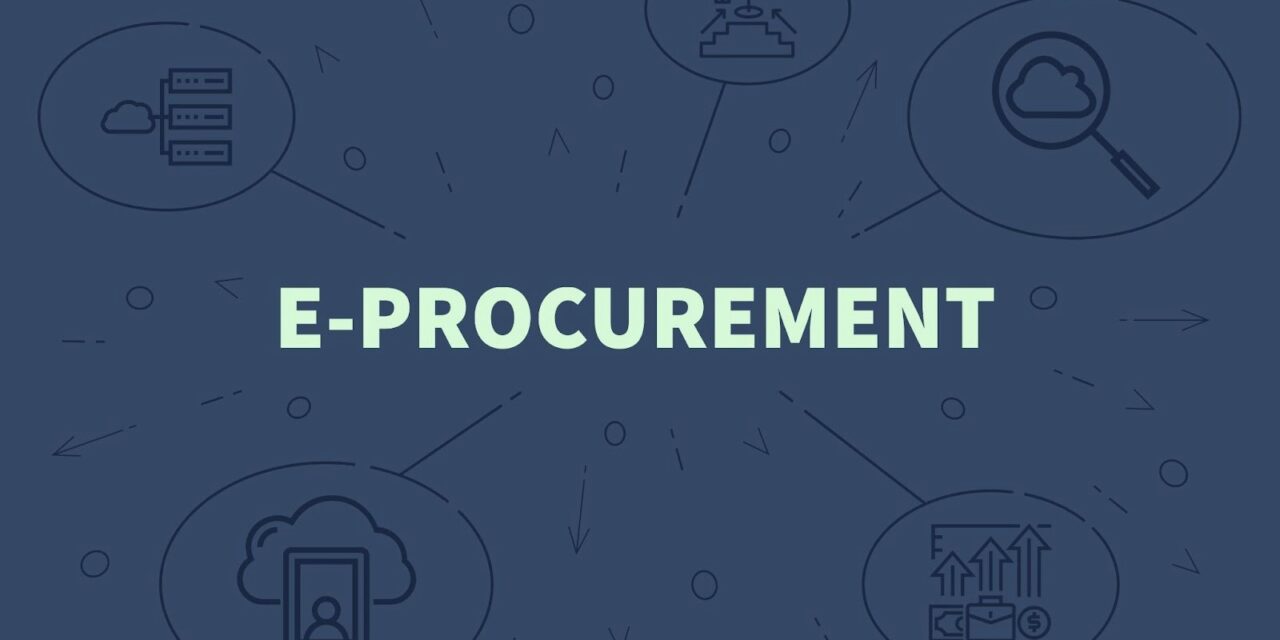In the dynamic and ever-evolving landscape of modern business operations, organizations are increasingly turning to innovative technologies to streamline their processes and enhance overall efficiency. Among the many technological advancements, Electronic Procurement (e-procurement) systems and Enterprise Resource Planning (ERPs) have emerged as integral components in the pursuit of operational optimization. This article aims to delve deep into the unique characteristics of these two systems, elucidating their differences and highlighting how each contributes to the efficiency and effectiveness of organizational processes.
I. Defining E-Procurement Systems and ERPs:
A. E-Procurement Systems:
1. Overview: E-Procurement systems represent digital platforms meticulously designed to facilitate the procurement of goods and services through online channels. The overarching goal is to automate and enhance the traditional procurement process, making it not only more efficient but also cost-effective.
2. Functionality: The functionalities embedded within e-procurement systems go beyond basic automation. These systems typically encompass features such as online catalogs, electronic requisitioning, supplier management, and electronic invoicing. The emphasis is on automating the entire purchasing process while concurrently fostering improved collaboration with suppliers.
B. Enterprise Resource Planning (ERPs):
1. Overview: In contrast, ERPs constitute comprehensive software solutions that transcend the boundaries of individual business processes. Instead, they integrate and manage various facets of an organization’s operations, including finance, human resources, supply chain, and manufacturing.
2. Functionality: ERPs provide a centralized database and a unified platform, facilitating the seamless flow of real-time data across different departments. This integration aims to break down silos, fostering collaboration and significantly enhancing the overall efficiency of an organization’s varied functions.
II. Key Differences Between E-Procurement Systems and ERPs:
A. Scope and Focus:
1. E-Procurement Systems: The primary focus of e-procurement systems lies in automating the procurement process. These systems are specialized tools targeting specific aspects of the supply chain, and their scope is inherently narrower than that of ERPs.
2. ERPs: In contrast, ERPs boast a more extensive scope, addressing a myriad of business processes beyond procurement. Their design is aimed at providing a comprehensive solution that encompasses the entirety of an organization’s operational landscape, from finance to human resources and beyond.
B. Primary Objectives:
1. E-Procurement Systems: The primary objective of e-procurement systems is to streamline and optimize the purchasing process. This involves the automation of workflows, reduction of manual errors, and negotiation with suppliers for improved terms.
2. ERPs: ERPs have a broader objective – they aim to enhance overall organizational efficiency by integrating various business processes. This integration allows for real-time data sharing, leading to improved decision-making and resource allocation across the entire organization.
III. Functionality and Features:
A. E-Procurement Systems:
1. Purchasing Process Automation: E-procurement systems excel in automating the purchasing workflow. These systems enable organizations to create, approve, and track purchase orders digitally, minimizing delays and errors associated with manual processes.
2. Supplier Collaboration: The inclusion of features promoting effective collaboration with suppliers is a hallmark of e-procurement systems. Electronic communication, performance tracking, and centralized supplier databases are common features that enhance collaboration and ensure a more robust supply chain.
3. Catalog Management: E-procurement systems provide tools for efficient catalog management, ensuring that employees have access to up-to-date product and pricing information. This feature aids in standardizing procurement and helps organizations make informed purchasing decisions.
B. ERPs:
1. Integrated Business Processes: The primary strength of ERPs lies in their ability to integrate various business processes. This integration eliminates data silos and facilitates seamless communication between different departments, leading to a more cohesive and efficient organizational structure.
2. Comprehensive Data Management: ERPs offer centralized data management, serving as a single source of truth for the organization. This centralized repository ensures consistency and accuracy of information across different departments, contributing to better decision-making.
3. Cross-Functional Reporting: ERPs enable cross-functional reporting, allowing organizations to generate comprehensive reports spanning multiple business areas. This capability provides a holistic view of the business, aiding in strategic decision-making based on a comprehensive understanding of the organization’s performance.
IV. Implementation and Adoption:
A. E-Procurement Systems:
1. Specific Implementation: E-procurement systems are typically implemented to address specific challenges within the procurement process. Organizations may choose to adopt these systems to enhance efficiency in sourcing, purchasing, and payment processes.
2. Quick Deployment: One notable advantage of e-procurement systems is their relatively quick deployment timeline. Organizations can implement these systems in phases, focusing on specific procurement functions and gradually expanding their usage.
B. ERPs:
1. Enterprise-Wide Implementation: ERPs necessitate a more extensive and enterprise-wide implementation process. This involves meticulous planning, customization, and comprehensive training to ensure successful adoption across various departments.
2. Longer Deployment Timelines: The deployment of ERPs is typically a more extended process compared to e-procurement systems. The complexity of integrating multiple business processes demands careful planning and execution, and organizations often need to allocate significant time and resources to ensure a seamless transition.
V. Cost Considerations:
A. E-Procurement Systems:
1. Focused Investment: The cost associated with implementing e-procurement systems is usually more focused on improving procurement processes. Organizations invest in these systems to achieve cost savings through better negotiation with suppliers, reduced manual effort, and improved procurement efficiency.
2. Variable Costs: While the costs of implementing e-procurement systems may vary based on the scale of deployment and specific features required, they are generally more predictable than the comprehensive investment required for ERPs.
B. ERPs:
1. Comprehensive Investment: ERPs involve a more significant upfront investment due to their comprehensive nature. This includes costs associated with software licensing, customization, training, and ongoing maintenance.
2. Long-Term Value: Despite the higher initial investment, organizations often view the implementation of ERPs as a long-term investment that provides enduring value. The comprehensive functionalities offered by ERPs contribute to cost savings and improved efficiency across various business functions over the long run.
VI. Scalability:
A. E-Procurement Systems:
1. Limited Scalability: E-procurement systems, by their nature, may have limitations in scalability. While they can scale within the procurement function, expanding their usage across the entire organization might require additional integrations with other systems.
2. Focused Growth: Organizations can scale e-procurement systems to accommodate growing procurement needs. However, scaling beyond procurement may necessitate additional considerations and integration efforts to ensure a seamless expansion of functionalities.
B. ERPs:
1. Enterprise-wide Scalability: ERPs are inherently designed to scale across the entire enterprise. As organizations grow, ERPs can seamlessly accommodate the increased complexity of business operations by adding modules and functionalities.
2. Adaptability to Change: ERPs provide the flexibility to adapt to changes in business requirements. Whether expanding into new markets, adding product lines, or adjusting business processes, ERPs can scale to support organizational growth and evolving needs.
EXTRA:
While both E-Procurement Systems and ERPs offer valuable solutions for optimizing business processes, one notable advantage of E-Procurement Systems lies in their ability to deliver targeted efficiency improvements in the procurement function. Here’s an extra tip on why E-Procurement can be particularly advantageous:
- Focused Efficiency in Procurement:E-Procurement Systems are specifically tailored to streamline and enhance the procurement process. Their focused nature allows organizations to quickly implement targeted solutions, resulting in more immediate and tangible improvements in efficiency within the procurement function.
- These systems excel in automating purchasing workflows, reducing manual errors, and fostering collaboration with suppliers. By concentrating on procurement-specific tasks, organizations can achieve quicker returns on investment and realize cost savings through improved negotiation with suppliers and optimized procurement workflows.
- For organizations with a primary goal of enhancing and modernizing their procurement processes, E-Procurement Systems offer a more direct and efficient solution compared to the broader scope of ERPs.
BONUS TIP
In addition to understanding the distinctions between E-Procurement Systems and ERPs, it’s essential to explore the diverse applications of E-Procurement that contribute to the optimization of procurement processes. These applications leverage digital solutions to streamline workflows, foster collaboration, and drive efficiency throughout the procurement lifecycle.
Consider these valuable applications as an extra layer of insight to enhance your understanding:
Automated Purchasing Workflows:
E-Procurement excels in automating the purchasing process, reducing manual effort, minimizing errors, and accelerating the procurement cycle. Embrace the efficiency gains from end-to-end automation, optimizing requisition to order placement workflows.
Electronic Requisitioning:
Enable electronic requisitioning to expedite requests, providing a transparent trail of requisitions. This not only speeds up the process but also enhances accuracy and ensures better budget control.
Supplier Collaboration:
Leverage E-Procurement for improved collaboration with suppliers through real-time electronic communication. Strengthen relationships, negotiate terms, and address issues promptly for a more efficient procurement collaboration.
Centralized Supplier Management:
Utilize centralized supplier management features to maintain a comprehensive repository of supplier information. Enhance decision-making by having a centralized hub for performance metrics, transaction history, and strategic sourcing initiatives.
Electronic Invoicing:
Embrace electronic invoicing to streamline the invoice processing cycle. Reduce manual effort, enhance accuracy, and contribute to cost savings by transitioning from traditional paper-based invoices.
Online Catalog Management:
Optimize procurement decisions by utilizing tools for efficient online catalog management. Ensure standardized and accessible catalogs for employees, providing up-to-date product and pricing information.
Data Analytics for Strategic Decision-Making:
Harness the power of E-Procurement analytics to gain insights into spending patterns, supplier performance, and overall procurement efficiency. Make informed, data-driven decisions to identify cost-saving opportunities and optimize procurement strategies.
Compliance Monitoring and Auditing:
Ensure compliance with organizational policies and regulatory requirements through automated compliance monitoring. Minimize the risk of non-compliance and facilitate easier auditing of procurement activities.
Integration with Other Business Systems:
Enhance overall organizational efficiency by integrating E-Procurement with other business systems such as ERPs. Enable seamless data flow between departments, fostering cross-functional collaboration and providing a holistic view of organizational processes.
Scalability for Growing Procurement Needs:
Recognize the scalability of E-Procurement solutions to accommodate growing procurement needs. Whether expanding the supplier base or increasing transaction volumes, these systems offer scalability to meet evolving business requirements.
Incorporating these E-Procurement applications into your organizational strategy can unlock new levels of efficiency, collaboration, and data-driven decision-making within your procurement processes. As you explore the landscape of digital solutions, consider these tips as essential tools for optimizing your procurement function and navigating the complexities of the modern supply chain.
Conclusion:
In conclusion, the distinctions between e-procurement systems and ERPs lie not only in their scope and primary objectives but also in their functionalities, implementation processes, cost considerations, and scalability.
While e-procurement systems excel in streamlining and optimizing the procurement process, ERPs offer a comprehensive solution that integrates and enhances the efficiency of an organization’s diverse business functions.
The decision to implement an e-procurement system or an ERP hinges on an organization’s specific needs, priorities, and long-term strategic goals. Organizations seeking targeted improvements in procurement efficiency may find e-procurement systems to be a suitable solution.
Conversely, those looking for a holistic approach to business process optimization and integration may opt for the broader functionalities offered by ERPs. Ultimately, a thoughtful analysis of organizational requirements, scalability needs, and long-term goals is paramount in making an informed decision that aligns with the strategic objectives of the business.












